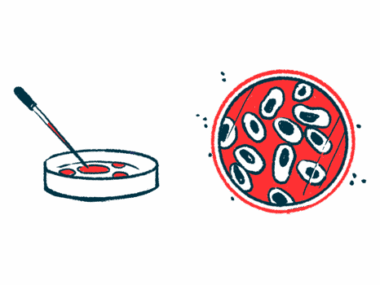A parent’s dilemma: How to get a child with Alagille to eat enough
Growth and weight gain are a major focus of treatment in this family
Written by |

Feeding small children is a daunting process for parents. Will they eat what’s been prepared? How much of a mess will they make? Are they eating enough to keep them from going hungry?
I remember experiencing these feelings with our oldest son, Jackson, when he was starting out on solid foods. As parents, we learn to navigate the days when our kids just won’t eat, and we remind ourselves that they’ll let us know when they need food.
Reasoning with ourselves is tough, but doable. But in our family’s case, it became much harder to manage when our second son, Finley, was born with Alagille syndrome.
The organ that’s been most affected by Finley’s Alagille syndrome is his liver. Therefore, growth and weight gain have been a major focus of his treatment.
Nutrition became a focal point, even before Finley’s diagnosis. While we were in the neonatal intensive care unit, he started on the formula Pregestimil and stayed on it — albeit at a higher calorie count per ounce — until he aged out of taking it. We’d make it in protein shakers, going through a can of formula every few days.
Today, formula is still a part of our nutrition plan, but it’s a toddler-focused product that supplements the foods he eats throughout the day. Finley is now a good eater (when he chooses to be). He’s more adventurous than his brother with his food. He regularly enjoys eating off Mommy’s and Daddy’s plates. He likes spices and unique foods.
As with any 3-year-old, he also has days when he absolutely will not eat. Those are the days when my wife and I struggle.
Forcing things doesn’t work
We are hyperaware of the fact that, because of his liver disease, Finley needs calories and fats in his diet. If he’s eating, we can sneak in extra calories by adding butter or cream cheese to a noodle dish, or powdered milk to his yogurt. We’ll slap a little avocado oil on a piece of bread before adding jelly. But when he won’t eat, our stress, not Finley’s, peaks.
I’ve been working on better understanding this feeling. Our dietitian has been fabulous in reminding us that while we need Finley to eat as much as he can, forcing it won’t achieve anything. He’ll get what he needs over the span of the week.
That’s easier said than done for me on, let’s say, a random Wednesday night when I’m tired from work and desperately want him to eat so that I can feel better about the day.
Working on that feeling has been challenging. All I want as a parent and caregiver is for Finley to thrive. There is personal trauma from hearing the term “failure to thrive” early in his life, at the beginning of his diagnosis journey. What I don’t want to do is pass that stress I feel on to Finley. As hard as it is, if he says he’s done and wants to be excused, we let him go. Trying to persuade a 3-year-old to stay at the table is a fool’s errand.
Yet on other nights, he can be a garbage disposal. The big takeaway I must always remember is that he dictates his food intake. I can control what goes on the plate, but he controls the rest. We have to work together on it.
I think we’re getting better at it. At least he got over the fun phase he went through a year ago when he would throw his plate on the floor. That’s nice to leave in the past.
Nutrition is something Finley will need to pay attention to for the rest of his life. As his parents, we’ll continue to introduce him to new foods that are beneficial for his needs. When the time is right, we’ll teach him about our tricks to add calories to his meals. It’s a team effort. I need to remind myself that during meals, we have to approach it together. Parent and child. If we do that, everyone will enjoy the process much more.
Note: Liver Disease News is strictly a news and information website about the disease. It does not provide medical advice, diagnosis, or treatment. This content is not intended to be a substitute for professional medical advice, diagnosis, or treatment. Always seek the advice of your physician or other qualified health provider with any questions you may have regarding a medical condition. Never disregard professional medical advice or delay in seeking it because of something you have read on this website. The opinions expressed in this column are not those of Liver Disease News or its parent company, Bionews, and are intended to spark discussion about issues pertaining to liver disease.










Leave a comment
Fill in the required fields to post. Your email address will not be published.